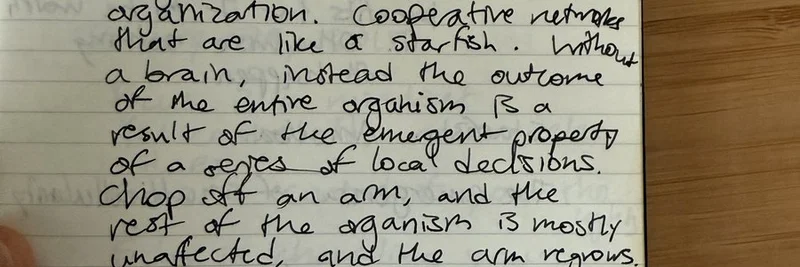In the fast-paced world of blockchain and crypto, sometimes it's the old insights that hit the hardest. Back in January 2018, before diving full-time into the industry, Nick White—now a key figure in scaling web3 with modular blockchains at Celestia—jotted down some thoughts in his journal. Fast forward to 2025, and he's shared that entry on X, reminding us why blockchain isn't just about tech; it's about rethinking how we humans team up on a massive scale.
A Glimpse into the Journal
The entry paints blockchain as a game-changer for "social scalability." What's that, you ask? In simple terms, social scalability refers to our ability to form and maintain cooperative networks that grow without falling apart under their own weight. Traditional systems often rely on central authorities—like governments or corporations—to keep things in check, but that creates bottlenecks and single points of failure.
White's notes describe blockchain as enabling "larger cooperative networks than ever before" without those central weak spots. He compares these networks to a starfish: decentralized, resilient, and capable of regeneration. Chop off an arm (or, in crypto terms, face a hack or regulatory hit), and the rest of the organism keeps thriving, even regrowing what's lost. There's no "brain" or central command; outcomes emerge from countless local decisions, much like how neurons fire in a brain or how open-source projects evolve through community contributions.
He emphasizes resilience: "There is no center to target. It is resilient. You cannot manipulate it. You can only cooperate with it. Or ignore it." And ignoring it? That means getting left behind in the "old world," as the social organism marches on.
Why This Matters for Meme Tokens
At Meme Insider, we're all about meme tokens—the wild, community-driven side of crypto where humor, virality, and speculation collide. But White's vision from 2018 perfectly captures why meme tokens thrive on blockchain. Think about it: a meme coin like Dogecoin or newer ones on Solana or Base aren't controlled by a single entity. They're emergent phenomena, born from social media buzz, community memes, and decentralized trading.
These tokens embody social scalability. No CEO to bribe or headquarters to shut down. The value and momentum come from thousands of "local decisions"—traders buying in, creators pumping out content, holders diamond-handing through dips. It's starfish-like: even if a big wallet dumps or a platform bans discussion, the network adapts. New communities form, forks happen, or the meme evolves.
In the meme token space, this resilience is key to survival. Projects like PEPE or SHIB have weathered market crashes and FUD (fear, uncertainty, doubt) because their strength lies in the distributed network of believers, not a fragile central point. Blockchain's permissionless nature lets anyone join the cooperation, scaling the "social organism" globally.
From 2018 to Now: Still Building
White notes that eight years later, he's still chasing this vision. And he's not alone. Modular blockchains like Celestia are pushing the envelope on scalability, making it easier for meme tokens and other dApps (decentralized applications) to handle massive user bases without choking on fees or centralization risks.
For blockchain practitioners, this is a call to action. Whether you're trading memes, building protocols, or just HODLing, embracing this decentralized mindset is crucial. Ignore it, and yeah, you might get left behind as the crypto world evolves into something bigger, more interconnected, and incredibly resilient.
If you're diving into meme tokens, remember: it's not just about the laughs or the gains. It's about participating in a new way of organizing the world—one local decision at a time.


